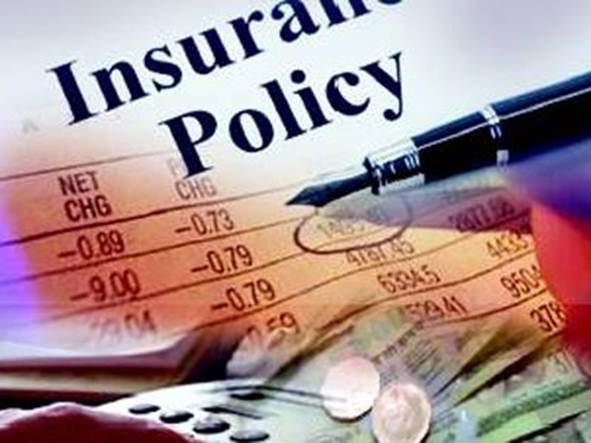Even the financially well-off are not immune
to making these money mistakes
You may have heard of the Pareto principle
[also known as the 80-20 rule]: it says that for many phenomena, 80 per cent of
the effect arises from 20 per cent of the causes. Even your small investment
mistakes too have that impact on your overall finances. My promise to you is
that if you take care of the five points discussed below, a good deal of your
financial planning related problems will get taken care of.

Even
the financially well-off are not immune to making these money mistakes
1. No written plan or strategy
The first thing you need is to prepare a
written financial plan to give concreteness to your plans and ensure that you
don’t deviate from the course.
Since most individual investors lack the
knowledge for preparing a detailed plan, it is best to approach a trained
financial planner to get this work done. The financial planner will ask you to
fill up a detailed questionnaire to gauge your risk appetite, your current
financial situation and your goals among other things. It is on the basis of
this information that the plan is prepared. When your plan is unclear, you end
up investing wrong. If your portfolio of wrong investments is big and a lot of
time has gone by, undoing these mistakes becomes costly and difficult.

No
written plan or strategy
A correlated mistake is to buy the
flavour-of-the-day product. When the equity markets are doing well, the launch
of NFOs [new fund offers], sector funds, and IPOs [initial public offerings]
becomes frequent. The investor is lured into buying these high-risk products
that he can well do without. Then the bull run ends, the value of these
investments crashes, and the investor regrets his impulsive purchases.
So, get a basic portfolio in place with a
select number of correct products and then stay the course.
2. Wrong insurance policies
I come across numerous portfolios where the
bulk of a person’s investments are insurance-cum-investment products, such as
ULIPS [unit-linked insurance plans], moneyback and endowment plans. This
creates problems. The first problem is that investing in
insurance-cum-investment plans leaves us inadequately insures despite paying a
high annual premium. The second problem is that these products are costly and
affect final returns. Some products have high surrender charges in the initial
years, which makes opting out of them difficult even if we are dissatisfied
with them.

Wrong
insurance policies
To avoid these troubles, buy a term plan
from an insurance company for adequate insurance cover and use mutual funds to
meet your investment goals. As said, get adequate insurance. The sum assured of
the term plam must be sufficient to replace the breadwinner’s income in case of
an eventuality. To determine the right sum assured, most people follow the rule
of thumb: sum assured equal to 10 times annual salary.
Also, most working couples depend just on
employer-sponsored health plans. But what if you fall ill between jobs? This is
not as uncommon as you might think. When Lance Armstrong, bicycling champion
and seven time winner of the Tour de France, was diagnosed with cancer, he was
in the midst of changing his team [sponsor] and was without an insurance cover.
Besides, getting health insurance is difficult once you cross late 40s.
3. Not enough kept aside
A number of double-income couples who,
despite earning well, don’t save enough. Many live for the day, splurging on
whatever catches their fancy. Worse still, some even rake up personal loans and
large credit card debt.

Establish
a contingency fund
Pay off all high-cost debts. Only car loans
and home loans are permissible as they help create an asset. Next, invest at
least 30 – 35 per cent of your gross monthly salary.
Establish a contingency fund. This must equal
at least six months of your household expenditure [including insurance
premiums, tuituion fees and other big bills that come up from time to time].
Put this money in a bank deposit or a liquid fund where it can be reached
quickly in an emergency.
4. Improper asset allocation
Most investors don’t give adequate thought
to asset allocation [how much they will allocate to equity, debt and gold]. But
this is perhaps the most significant decision you will take in your entire
financial life. Studies show that more than 90 per cent of the final outcome
[the corpus you accumulate] depends on your asset allocation.
Your asset allocation should be a function
of your risk appetite and your investment horizon. In your retirement
portfolio, it’s okay to have a high percentage of equities because it is 15 –
20 years away. The same goes for children’s education portfolio [where you have
15 years or more]. When you are three years away from your goal, start reducing
your equity exposure and hiking the debt exposure so that a last-minute crash
in the equity markets does not deprive you from achieving your goal. Also, many
people end up investing heavily in real estate. Too much real estate restricts
liquidity since it at short notice is difficult.
5. No legal will
Many high net worth individuals are guilty
of this mistake. Some even keep financial secrets from their spouses. So if
something happens to them, their spouses often don’t even know the ATM password
to access the money in the savings account. No one in the family knows where
the person has invested the money, and where the relevant financial documents
have been kept. Absence of a will also leads to litigation among inheritors.

Prepare
a will even if you are in fine health to ensure a smooth handover of assets.
So, prepare a will even if you are in fine
health to ensure a smooth handover of assets. Also, prepare a detailed document
that lists your investments, how to access them and the password. Also mention
the key payments to be made during the year. Inform your spouse where you have
kept this document, further, when investing, name the nominee with due thought
and care.